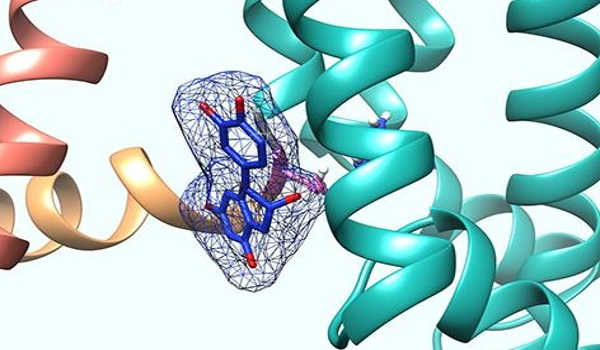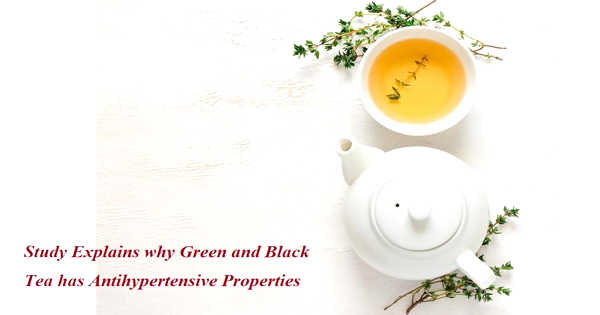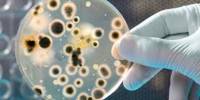According to a new study from the University of California, Irvine, compounds in both green and black tea relax blood vessels by activating ion channel proteins in the vessel wall. The discovery contributes to the understanding of tea’s antihypertensive properties and may lead to the development of new blood pressure-lowering medications.
The discovery was made in the laboratory of Geoffrey Abbott, Ph.D., a professor in the Department of Physiology and Biophysics at the University of California, Irvine School of Medicine. It was published in Cellular Physiology and Biochemistry. Kaitlyn Redford, a graduate student in the Abbott Lab, was the study’s first author, titled “KCNQ5 potassium channel activation underpins tea vasodilation.”
The study found that two catechin-type flavonoid compounds found in tea (epicatechin gallate and epigallocatechin-3-gallate) each activate a specific type of ion channel protein called KCNQ5, which allows potassium ions to diffuse out of cells and reduces cellular excitability. Because KCNQ5 is found in the smooth muscle that lines blood vessels, tea catechin activation was predicted to relax blood vessels – a prediction confirmed by collaborators at the University of Copenhagen.
A new study shows that compounds in both green and black tea relax blood vessels by activating ion channel proteins in the blood vessel wall. The discovery helps explain the antihypertensive properties of tea and could lead to the design of new blood pressure-lowering medications.
“We discovered that specific catechins bind to the foot of the voltage sensor, which is the part of KCNQ5 that allows the channel to open in response to cellular excitation, using computer modeling and mutagenesis studies. Because of this binding, the channel can open much more easily and earlier in the cellular excitation process “Abbott elaborated.
Because hypertension affects up to one-third of the world’s adult population and is regarded as the leading modifiable risk factor for global cardiovascular disease and premature mortality, new approaches to treating hypertension have enormous potential to improve global public health.
Previous research has shown that drinking green or black tea can reduce blood pressure by a small but consistent amount, and catechins have been linked to this effect. The discovery of KCNQ5 as a novel target for the hypertensive properties of tea catechins may aid in the optimization of medicinal chemistry for increased potency or efficacy.
KCNQ5, in addition to controlling vascular tone, is expressed in various parts of the brain, where it regulates the electrical activity and neuronal signaling. Pathogenic KCNQ5 gene variants exist that impair channel function and, as a result, cause epileptic encephalopathy, a severely debilitating developmental disorder characterized by frequent seizures. Because catechins can cross the blood-brain barrier, their ability to activate KCNQ5 may point to a future mechanism for repairing broken KCNQ5 channels and alleviating brain excitability disorders caused by their dysfunction.

Tea has been produced and consumed for over 4,000 years, and approximately 2 billion cups of tea are currently consumed each day worldwide, ranking second only to water in terms of volume consumed by people worldwide. The three most popular caffeinated teas (green, oolong, and black) are all made from the leaves of the evergreen species Camellia sinensis, with the differences resulting from varying degrees of fermentation during tea production.
In countries such as the United Kingdom and the United States, black tea is commonly mixed with milk before being consumed. The researchers discovered that when black tea was applied directly to cells containing the KCNQ5 channel, the addition of milk prevented the tea’s beneficial KCNQ5-activating effects. Abbott, on the other hand, “We do not believe that avoiding milk when drinking tea is necessary in order to benefit from its beneficial properties. We are confident that the environment in the human stomach will separate the catechins from the proteins and other molecules in milk that would otherwise prevent the catechins from having their beneficial effects.”
Other studies that show antihypertensive benefits of tea regardless of milk co-consumption support this hypothesis. Using mass spectrometry, the researchers discovered that heating green tea to 35 degrees Celsius changes its chemical composition in a way that makes it more effective at activating KCNQ5.
“Whether tea is consumed iced or hot, this temperature is achieved after the tea is consumed, as human body temperature is approximately 37 degrees Celsius,” Abbott explained. “As a result, simply drinking tea activates its beneficial, antihypertensive properties.”
The National Institutes of Health, National Institute of General Medical Sciences, National Institute of Neurological Disorders and Stroke, the Lundbeck Foundation, and the Danmarks Frie Forskningsfond all contributed to this research.
















